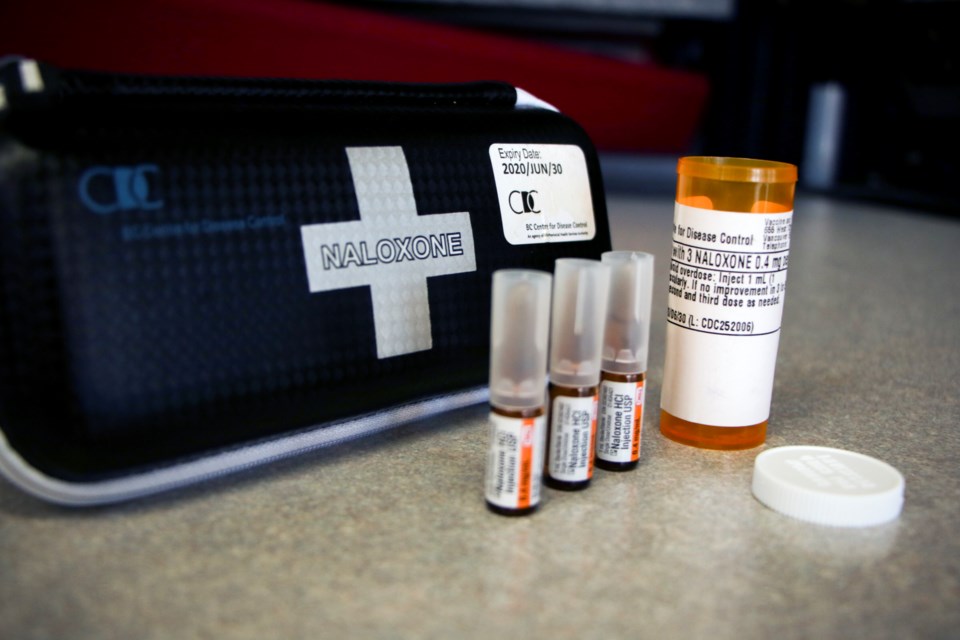But another issue has plagued B.C. for far longer than COVID-19 and was even called a public health emergency as far back as 2016. That year saw the beginning of skyrocketing deaths due to what we now call the drug poisoning crisis – one that has seen a number of names, overdose crisis and opioid epidemic among them.
But “drug poisoning crisis” is both more potent and more accurate. It’s not that substance use in and of itself is the cause of the increasing deaths – what changed starting in 2016 is the introduction of fentanyl to the drug supply.
In 2019, as drug toxicity deaths in B.C. dropped significantly, our attention turned elsewhere. But numbers can be deceiving.
A quick glance at the 2019 monthly overdose reports from Fraser Health could have been an early indicator. While deaths declined, ambulance calls to overdoses continued to increase. By the end of 2019, ambulances had responded to 455 suspected overdoses, compared to just 313 in 2018.
And, when the pandemic struck and COVID-related orders overrode harm reduction tactics, that dissonance between ambulance calls and deaths disappeared almost immediately. We don’t have the numbers for all of 2020, yet, but by the end of November last year, drug toxicity deaths in Burnaby had already set a new grim record. Forty-nine lives were lost to this crisis in the first 11 months of the year, among 1,548 throughout B.C.
Indeed, this epidemic has been significantly more deadly than the COVID-19 pandemic, which has seen 946 deaths throughout the province.
This isn’t the Olympics. A life lost to COVID is no less painful than a death to an overdose. But there’s a notable disparity in how the two public health emergencies have been covered.
Part of it is likely the novelty of the coronavirus, and certainly part of it is its wide-ranging impacts, from lockdowns to a massive economic downturn. But that latter point is key – those impacts from the pandemic are a result of governments taking the virus seriously.
It might be unfair to say governments haven’t taken the drug poisoning crisis seriously, but the difference between the two is stark. Particularly, there has been a disinclination by federal and provincial governments to heed the advice of police chiefs, public health experts, activists and drug users themselves.
In 2019, Dr. Bonnie Henry – by now a household name thanks to the pandemic and the well-deserved deference she’s received from the provincial government – recommended the province take action to bring in “de facto” decriminalization of drug users. She’s not the only one to chime in on decriminalization – the Canadian Association of Chiefs of Police recommended it last summer, and various other public health officials have done the same.
But neither the federal nor the provincial governments have budged on the issue.
There are some likely factors here. The people affected by COVID range from the poor to the wealthy, from Black and Indigenous people to white people. Those most affected by the drug poisoning crisis, however, tend to be poorer and to be Black or Indigenous.
But another factor in this is likely the lack of attention this crisis has gotten from the media. And that’s why it’s important to consider not only the massive headlines that cry out from newspapers’ front pages but also those that may be hidden deeper inside.
And it’s why the drug poisoning crisis is the undertold story of 2020.
Follow Dustin on Twitter: @dustinrgodfrey
Send him an email: [email protected]



